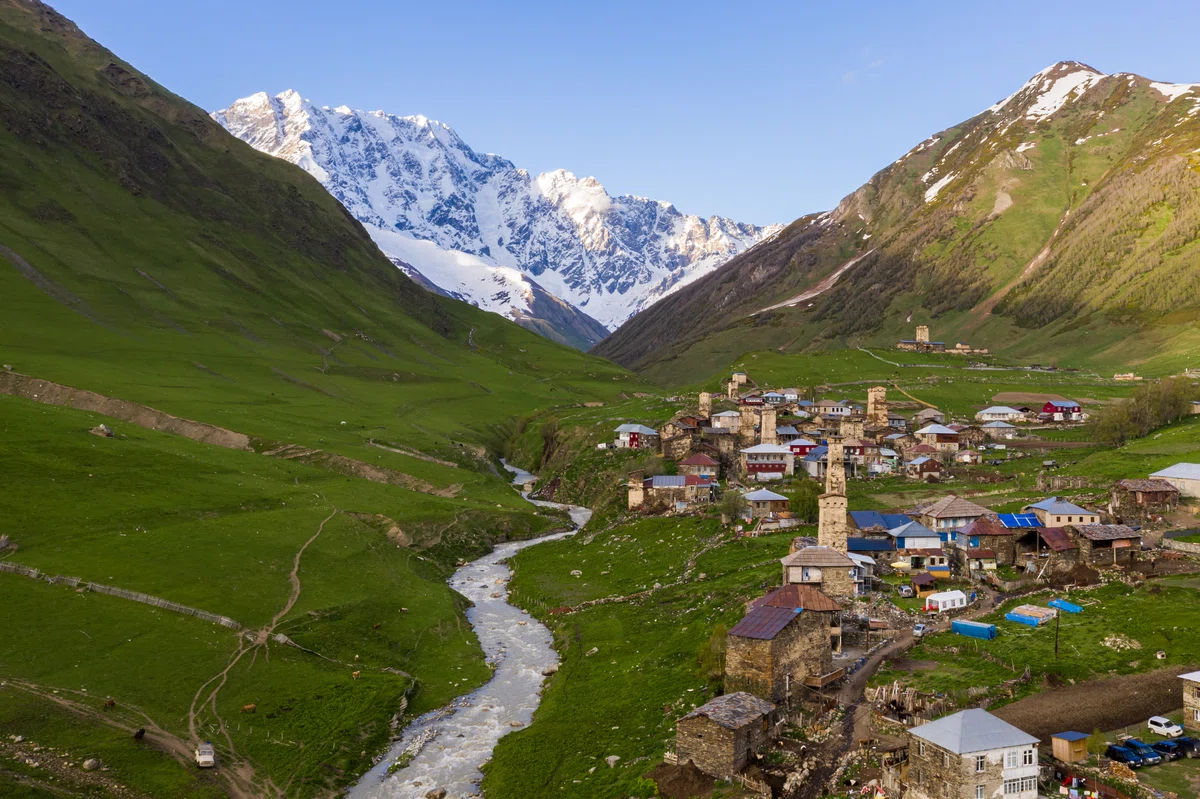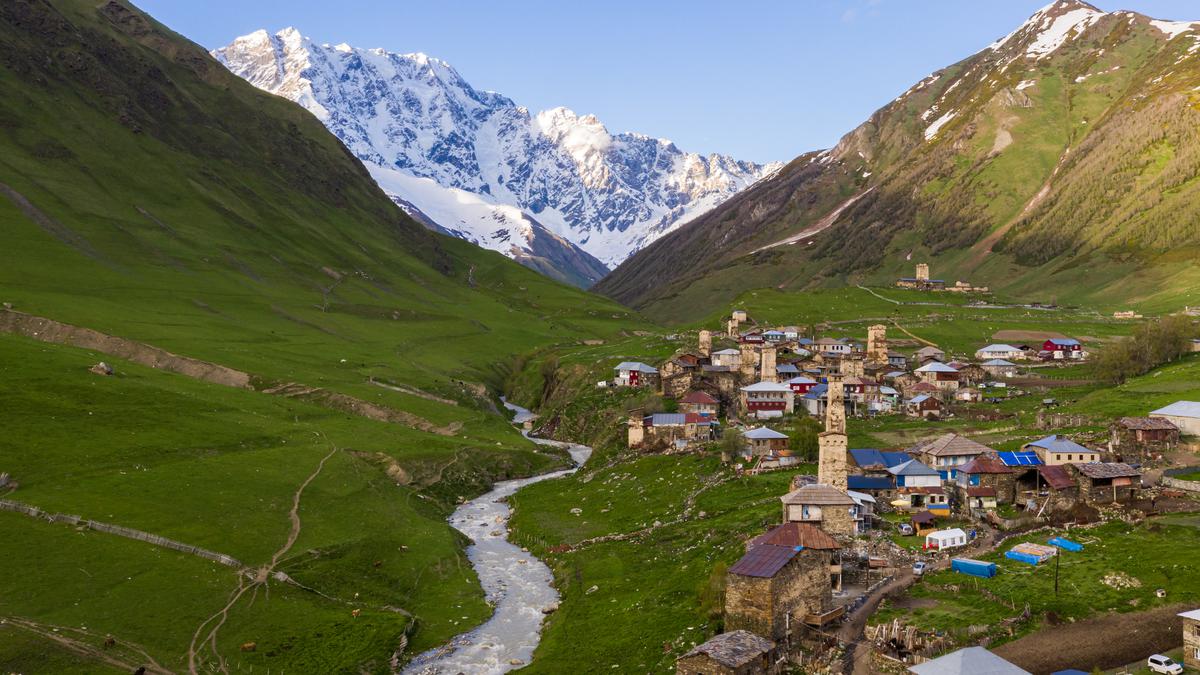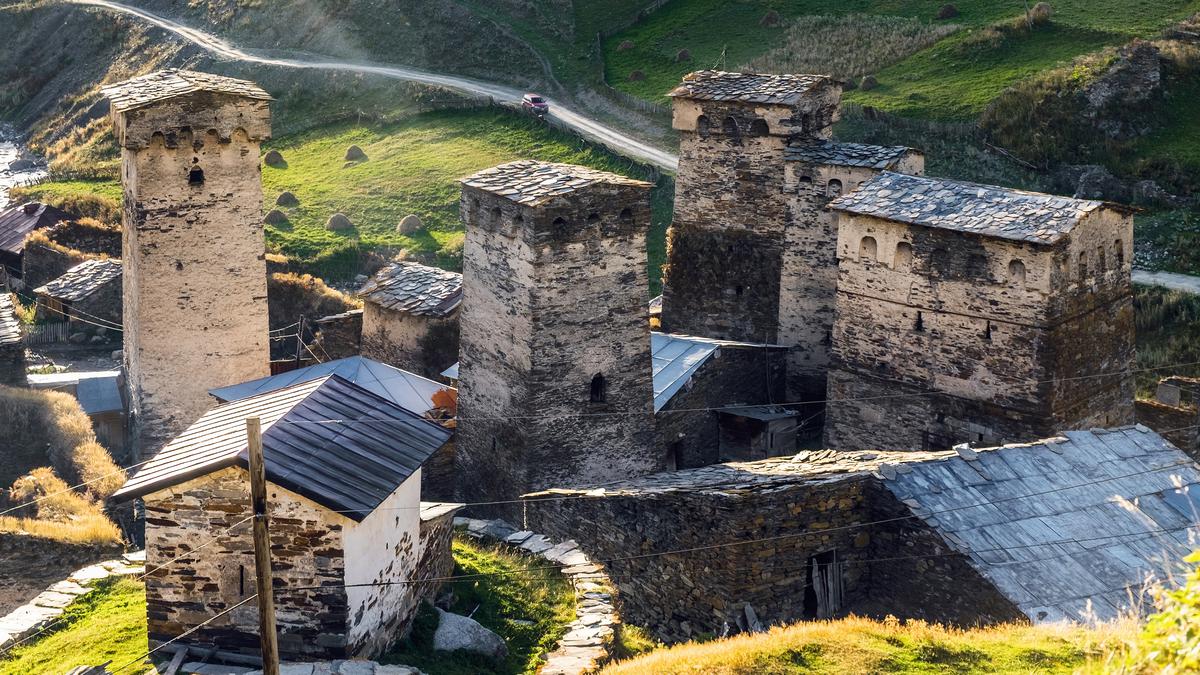
Svaneti Open-air Museum, UNESCO World Heritage Site in Georgia, Georgian fortress houses
Residents of Svaneti know a lot about the defense and protection of the home. The Madloba directory will introduce you to the unique traditions of highland Georgia, tell you why the Svan Towers are included in the UNESCO heritage. Explore ancient fortresses, go to the most mysterious corner of Georgia to comprehend the customs of the proud Svans!
The village of Chazhashi – the center of the Ushguli community – is an open-air museum. Since 1996, this village has been included in the UNESCO World Heritage List. 13 towers, 4 fortress houses, 21 machubis, 11 family houses and children's outbuildings have been preserved here.

Over the centuries, a unique culture, colorful traditions and customs have been formed in the mountainous Zemo Svaneti, which have been preserved to our time. Part of this culture is Svan architecture – a housing complex of unusual shape – fortress houses, which include: a tower, a dwelling house attached to the tower with a large hall (machubi), outbuildings and a house surrounded by a stone fence.
The Svan Tower, the most remarkable structure of the complex, is defensive in nature. Taking into account the fact that the region was completely cut off from the outside world in winter, and there was no threat of attacks at that time, the towers are summer buildings, without a heating system, each of the towers is located to the mountain range in such a way that the main living space is protected from avalanches. The height of the towers is 20-25 meters. They mainly consisted of 4-5 floors. The lower floor is a blind room; the entrance to the tower is on the second floor, at a height of 5-7 meters. On the top floor of the tower there is a combat platform with loopholes. Svan towers are covered with a gable roof. The floors are connected by a portable wooden staircase located in the interior. Instead of windows, openings were found in the tower – narrow from the outside and wide from the inside. Observation holes are made in the tower from the side from where you can observe the roads leading to the village.
Such dwellings are common throughout the Zemo Svaneti region. Only in Mestia there are about 50 towers of the XI-XVIII centuries. In Ushguli, the highest locality in the region, the preserved fortress houses are the oldest type of Svan dwelling. Some of them were built in the IX-XI centuries.













44 comments
Log in to leave a comment
Сванетия покорила меня не только своими башнями и домами, которые носят оборонительный характер, но и своими традициями, культурой и обычаями. Я бы хотела отправиться в это место и постичь все тайны, которые эти башни скрывают. Я очень впечатлена тем, что сванские башни были летними строениями, без отопительной системы, и располагались к горному массиву таким образом, что основное жилое помещение защищено от лавин. К тому же, они высокие на 20-25 метров, и состоят из 4-5 этажей. Нижний этаж – глухое помещение; вход в башню находится на втором этаже, на высоте 5-7 метров. Эти факты просто поражают меня своей инновационностью и оригинальностью. Также мне понравилось, что вместо окон в башне находятся проемы, узкие с внешней стороны и широкие с изнутри. Наблюдательные отверстия сделаны в башне с той стороны, откуда можно наблюдать дороги, ведущие в деревню. Это доказывает, что жители Сванетии знают толк в обороне и защите жилища. Я не могу сдержать своего желания отправиться в это место. Я уверена в том, что я обязательно смогу постигнуть все тайны этой культуры и стать частью их наследия. Спасибо за эту замечательную статью, которая приоткрыла для меня дверь в фантастический мир сванской культуры!
Уникальная культура, колоритные традиции и обычаи сохранились и до нашего времени. Сванская башня – самое примечательное строение, носящее оборонительный характер, высотой 20-25 метров. Зимой оторвано от внешнего мира. Нижний этаж – глухое помещение, вход –на втором этаже, на высоте 5-7 метров. На последнем этаже – боевая площадка. Переносная деревянная лестница связывает этажи. Вместо окон – проёмы.